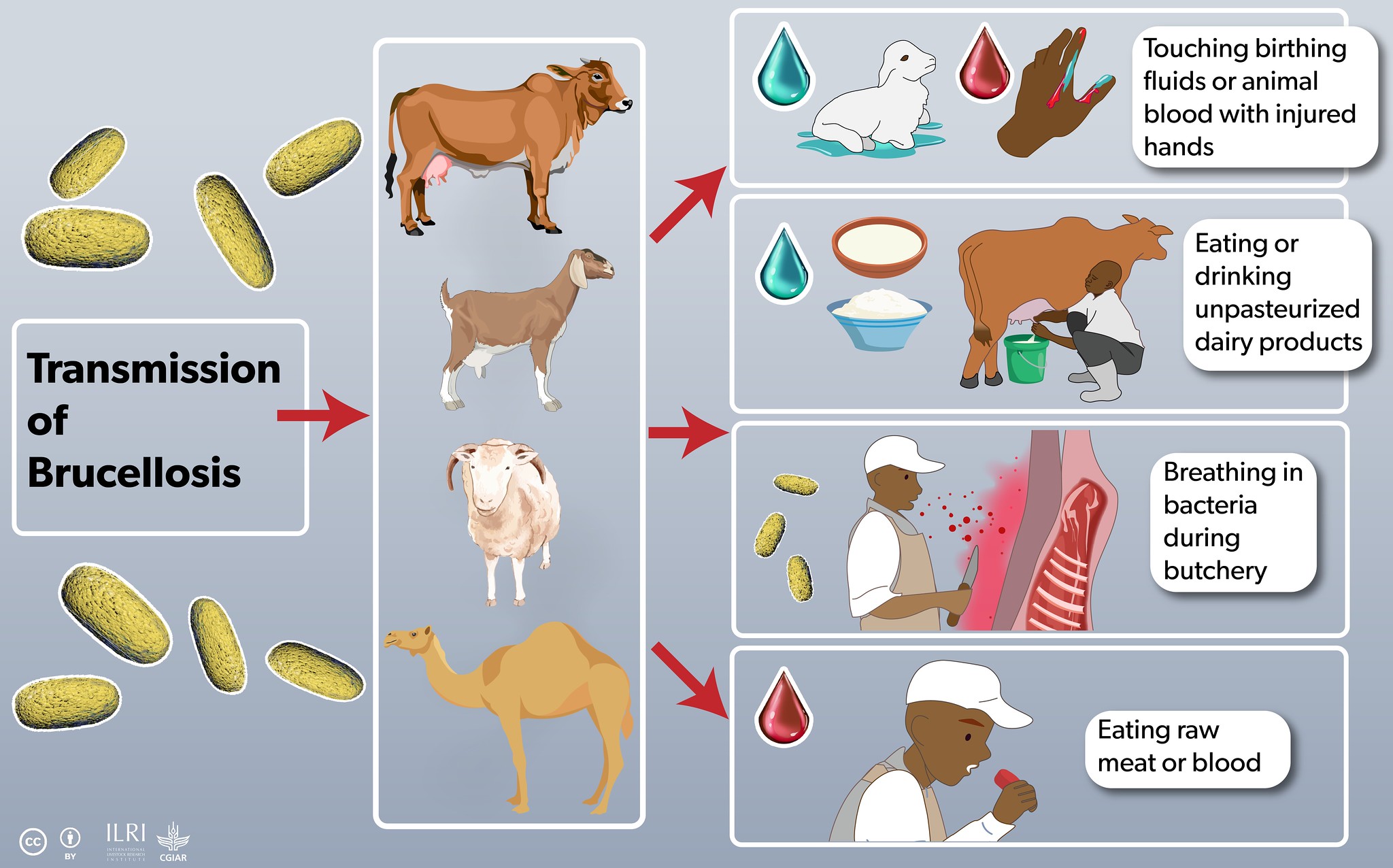
Research in Uganda highlights need to focus on small ruminants in brucellosis prevention and control
Contrary to common belief, small ruminants especially sheep and goats are more susceptible to exposure to brucellosis compared to cattle and pigs according to a new study from Uganda. This is a concern in the country because mixed husbandry, the herding of small ruminants and cattle together, is widely practiced by smallholders.
‘The spread of brucellosis is also driven by transhumant movement of livestock keepers in search of water and pastures, which further facilitate mixing of herds particularly in hard-to-reach areas that lack adequate veterinary services,’ said James Bugeza, lead researcher with the International Livestock Research Institute (ILRI)-led Boosting Uganda’s Investment in Livestock Development (BUILD) project, which carried out the study.
A bacterial disease affecting all major food animals, except poultry, and several species of wildlife, brucellosis is fourth among seven priority zoonotic diseases for control in Uganda.
In animals, the disease is spread when an infected pregnant animal aborts and releases large amounts of bacteria into the environment, which then are transmitted to other animals through consumption of contaminated pastures and water. It is a public health threat because it is transmissible to humans through consumption of unpasteurized milk and contact with body fluids from infected animals. It can also be spread through occupational practices like slaughtering animals and laboratory exposure. Though rarely fatal, it causes extreme suffering to the affected individuals, drains family resources to cater for medical bills and significantly reduces productivity.

Early detection and prioritizing high-risk areas are vital for brucellosis prevention and control.
Data was collected from three regional slaughterhouses and smaller abattoirs in Lira, Mbale, Soroti and Kampala as shown in Figure 1. Slaughterhouses are aggregating centres of livestock from districts in neighboring regions, therefore sampling animals at the point of slaughter is a cost-effective method of testing animals from a wide geographical area to get a broad outlook of the disease situation. However, it is likely that cases were missing during this study because animal slaughter in Uganda is not well coordinated, and many animals are slaughtered outside the gazetted slaughter facilities.

Blood samples from 925 small ruminants (sheep and goats), 886 cattle and 900 pigs were tested. The study found 6.7% (51/925) small ruminants, 3.8% (31/886) cattle and 2.8% (17/900) pigs tested positive for brucellosis indicating a higher prevalence of the disease in small ruminants, compared to cattle and pigs.
The study also found that brucellosis was more prevalent in eastern Uganda, especially the Karamoja subregion, where communal land ownership and grazing are common. Under these conditions, controlling the spread of Brucella and implementing livestock disease control strategies are particularly difficult.
Bugeza says ‘brucellosis control should prioritize high-risk regions with interventions like stakeholder mobilization, awareness creation, vaccination, implementation of on-farm biosecurity practices, regular testing and purchasing of stock from brucellosis free herds/flocks and enforcing animal movement controls.’
The research was conducted under the BUILD project by researchers from the National Livestock Resources Research Institute (NaLIRRI), Ministry of Agriculture, Animal Industries and Fisheries, Makerere University and ILRI. It was funded by the German Federal Ministry of Economic Cooperation and Development (BMZ) with Additional support was received from the CGIAR Research Programs on Livestock and Agriculture for Nutrition and Health and the CGIAR Fund Donors.
Read the full paper here:








